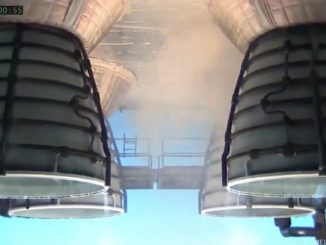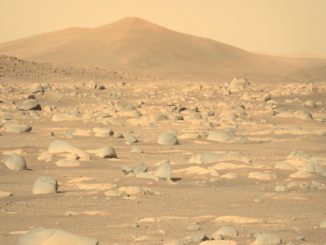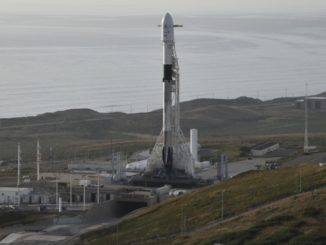A Russian Soyuz rocket rolled out to a launch pad in Kazakhstan early Thursday in preparation for liftoff Saturday with a Russian commander, Italian flight engineer and U.S. astronaut heading for the International Space Station.
The three-stage Soyuz-FG rocket rode a rail car from an assembly building to Launch Pad No. 1 at the Baikonur Cosmodrome in Kazakhstan, the same pad from which Yuri Gagarin launched on humanity’s first voyage into space in 1961.
Following a procedure executed hundreds of times at Launch Pad No. 1 since the dawn of the Space Age, the Soyuz booster rolled up to the launch complex Thursday, and an erector raised the rocket vertical over a flame bucket carved from the Kazakh steppe.
Ground teams raised retractable service towers into position around the rocket, providing access to the vehicle for final preflight checkouts, and for the three-man crew set to ride the Soyuz into orbit Saturday.
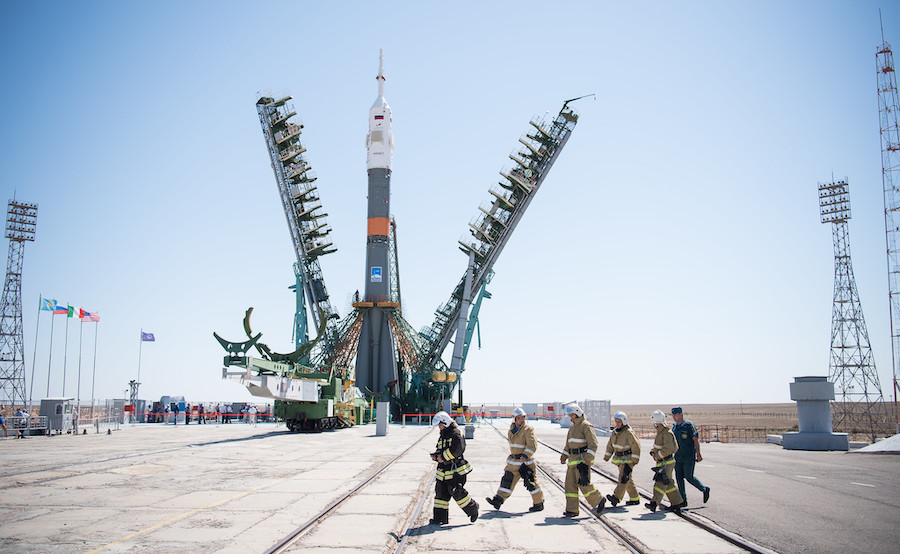
Russian commander Alexander Skvortsov, Italian-born flight engineer Luca Parmitano and NASA astronaut Drew Morgan are set for liftoff at 1628:21 GMT (12:28:21 p.m. EDT) Saturday on top of the Soyuz rocket.
The three crew members will ride into orbit inside the Soyuz MS-13 spacecraft in pursuit of the International Space Station.
The kerosene-fueled Soyuz booster will climb away from the barren Central Asia spaceport with more than 900,000 pounds of thrust. Liftoff is scheduled for 9:28:21 p.m. local time at the Baikonur Cosmodrome.
The Soyuz third stage will inject the spacecraft and crew into a preliminary orbit less than nine minutes after liftoff. After extending its solar arrays and navigation antennas, the Soyuz MS-13 spaceship will kick off a series of orbital adjustment maneuvers to reach the space station’s altitude more than 250 miles (400 kilometers) above Earth.
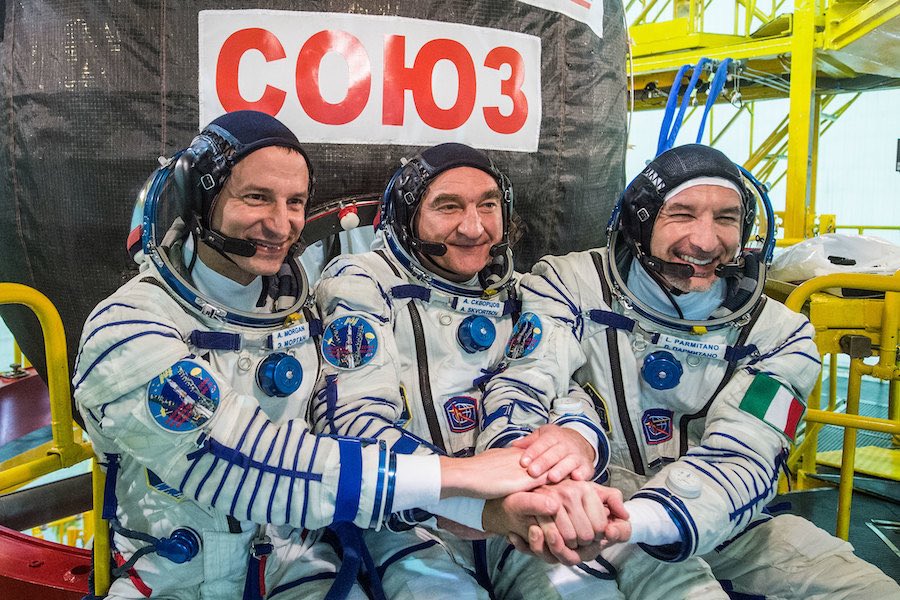
Docking with the aft port of the space station’s Zvezda service module is scheduled for 2250 GMT (6:50 p.m. EDT) Saturday. Skvortsov, Parmitano and Morgan will float into the station a couple of hours later to boost the station crew size back to six, joining Expedition 60 commander Alexey Ovchinin and flight engineers Nick Hague and Christina Koch.
Skvortsov will sit in the center seat of the Soyuz spacecraft. The 53-year-old cosmonaut is set to fly on his third space mission, following two expeditions on the space station in 2010 and 2014. Skvortsov, a former military fighter pilot who was born in the Moscow region, has logged 345 days in space on his previous two missions.
Luca Parmitano is representing the European Space Agency and will occupy the left-hand seat of the Soyuz spacecraft, filling the role of primary flight engineer.
Parmitano, 42, considers Catania, Sicily, as his hometown. He earned a bachelor’s degree in political sciences from the University of Naples Federico II and holds a master’s degree in experimental flight test engineering from the Institute Superieure de l’Aeronautique et de l’Espace in Toulouse, France. Parmitano served as a combat pilot and test pilot in the Italian Air Force before his selection as an ESA astronaut in 2009.
This will be Parmitano’s second mission to the space station, following a 166-day flight in 2013. Parmitano will become commander of the Expedition 61 crew on the station later this year.
U.S. Army Col. Drew Morgan, 43, is making his first trip into space after his selection to join NASA’s astronaut corps in 2013. Born in Morgantown, West Virginia, to a military family, Morgan grew up at different locations across the United States and Great Britain and graduated from the U.S. Military Academy at West Point with a bachelor’s degree in environmental engineering.
Morgan earned a medical degree in from the Uniformed Services University of the Health Sciences in Bethesda, Maryland, and deployed in support of combat operations in Afghanistan, Iraq and Africa.
Skvortsov and Parmitano are slated to spend 201 days in space before returning to Earth in their Soyuz MS-13 spaceship on Feb. 6, 2020. NASA flight engineer Christina Koch, who launched in March on a previous Soyuz mission, will also come home on the Soyuz MS-13 spaceship to conclude a 328-day expedition.
Morgan will remain on the station until next April before returning to Earth with a Soyuz crew set for launch in September.
More photos of Thursday’s rollout are posted below.
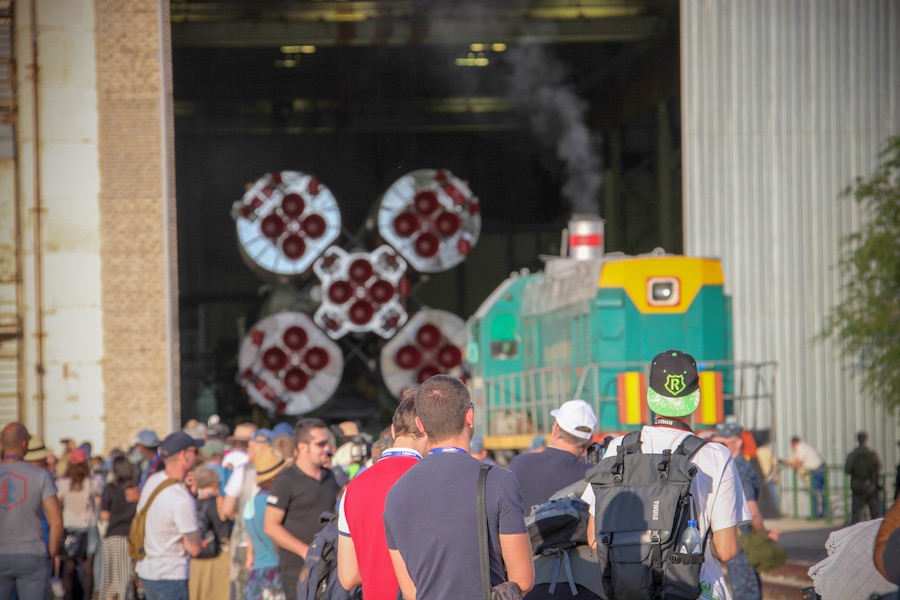
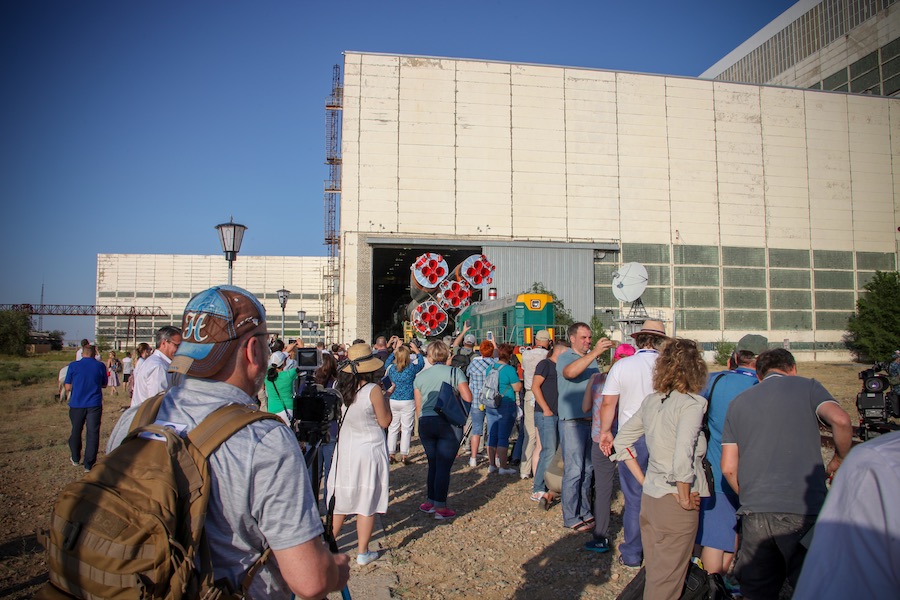
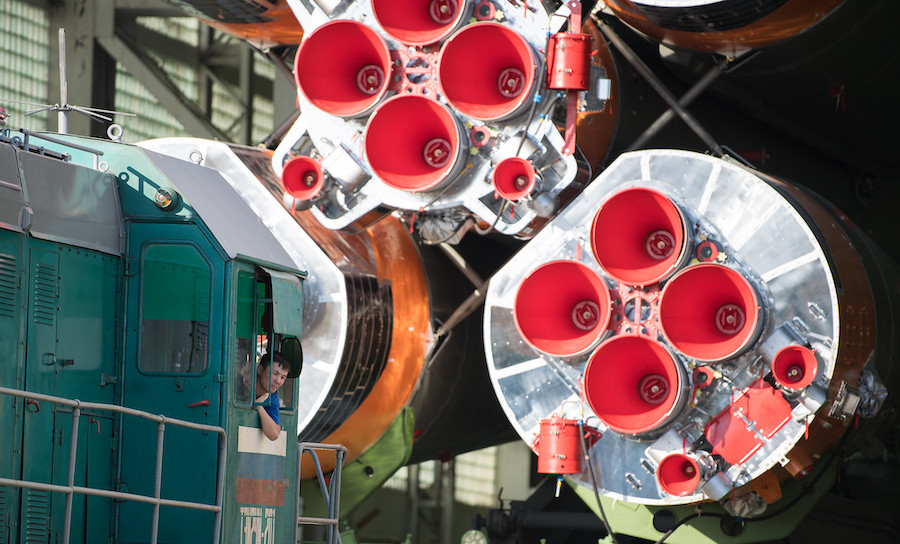
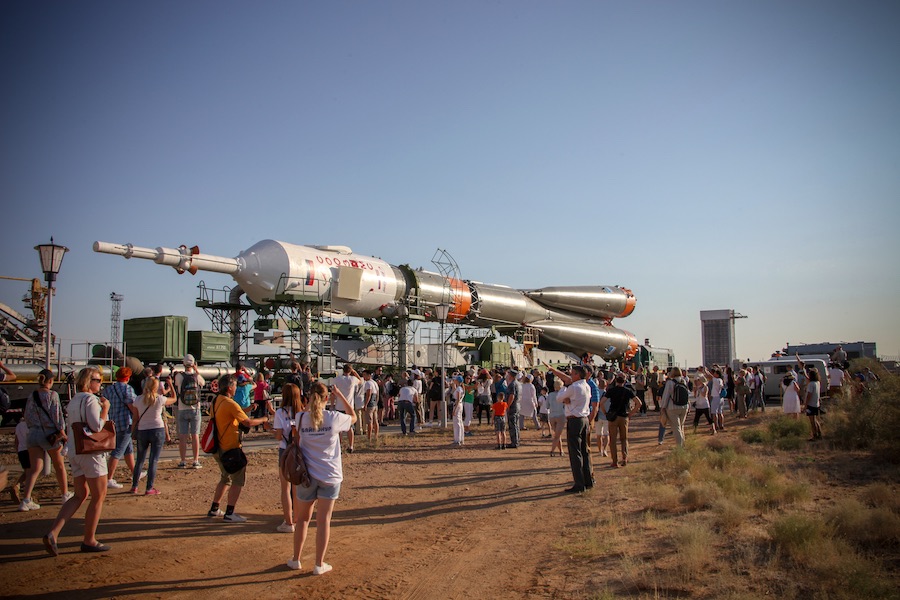
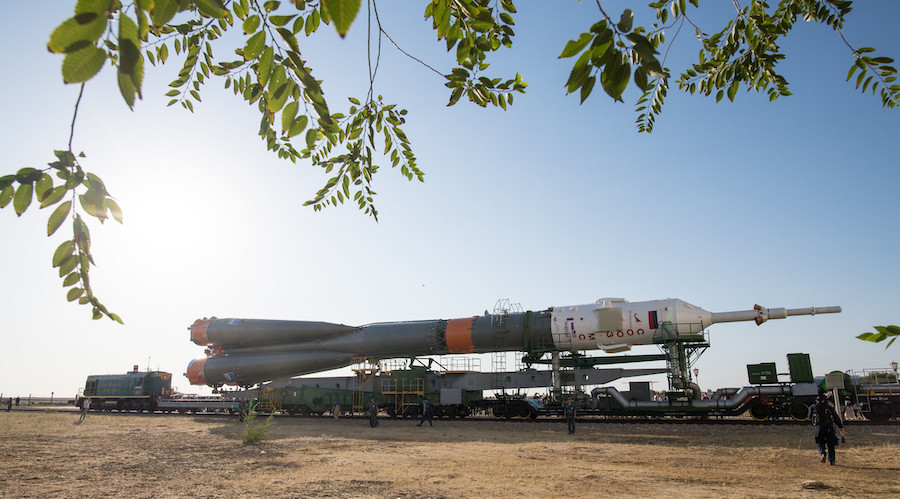
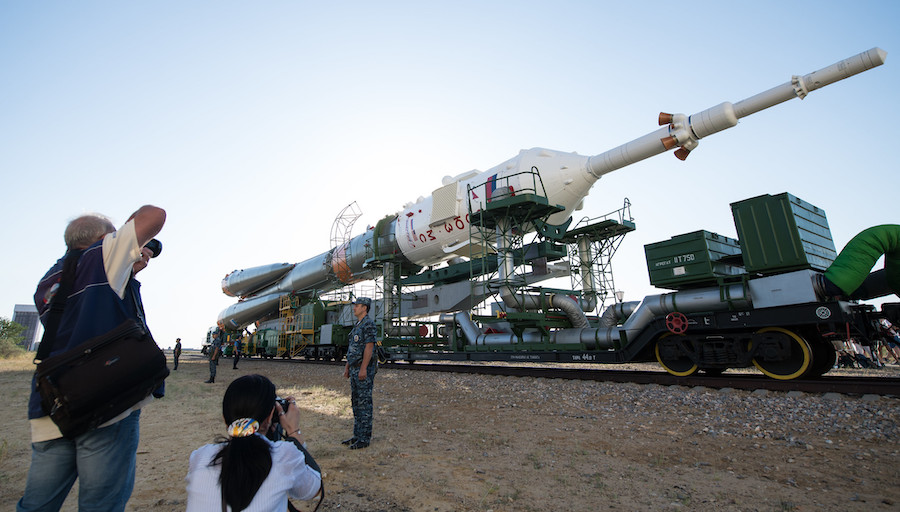
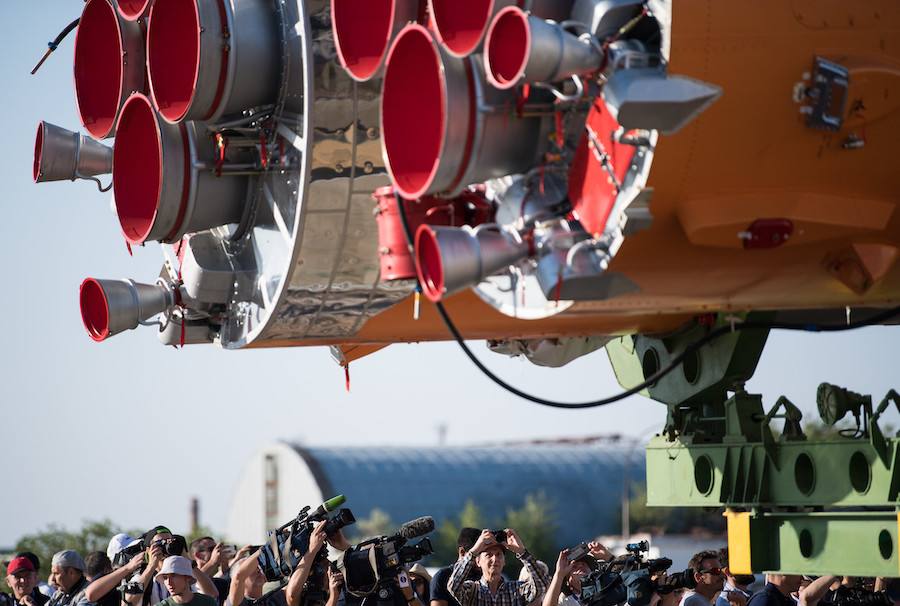
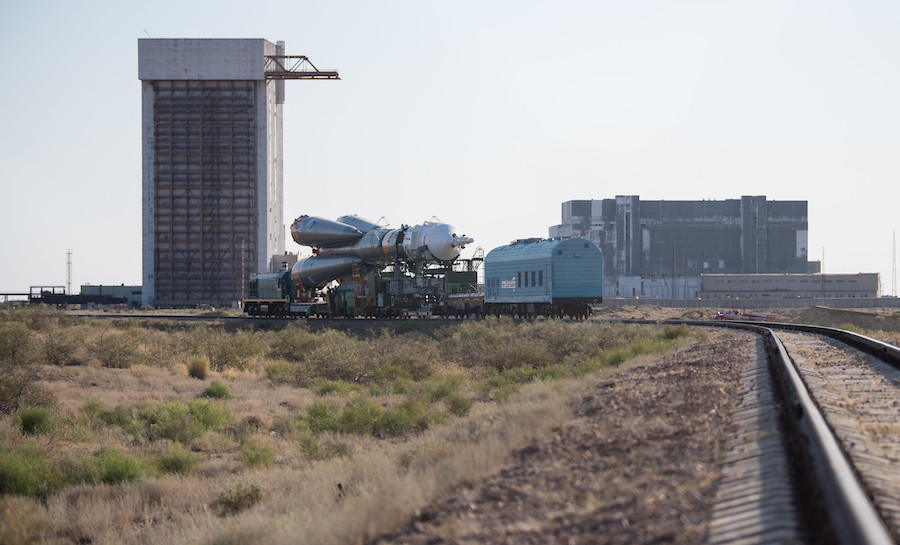
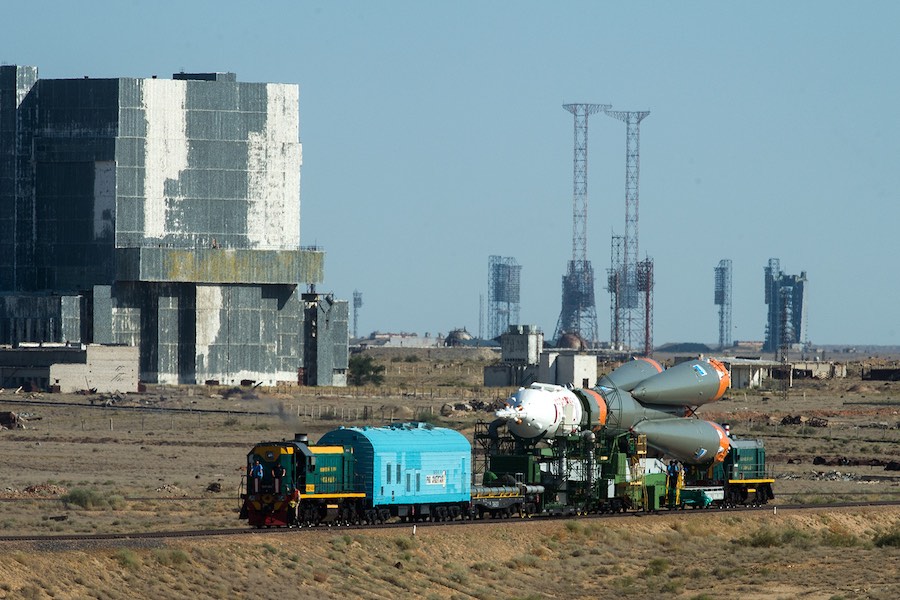
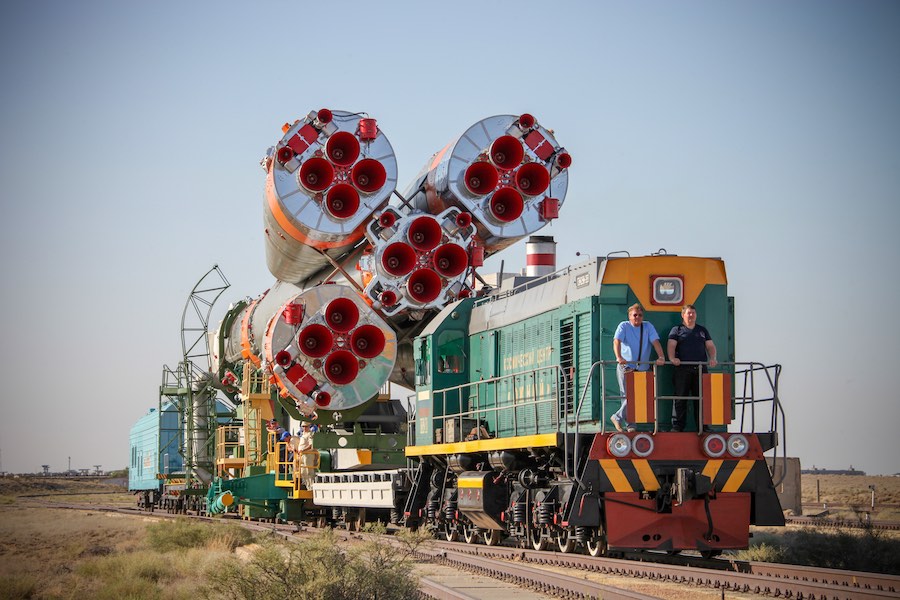
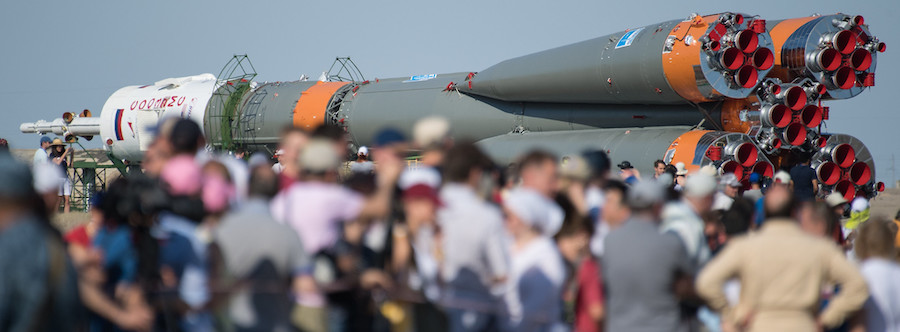
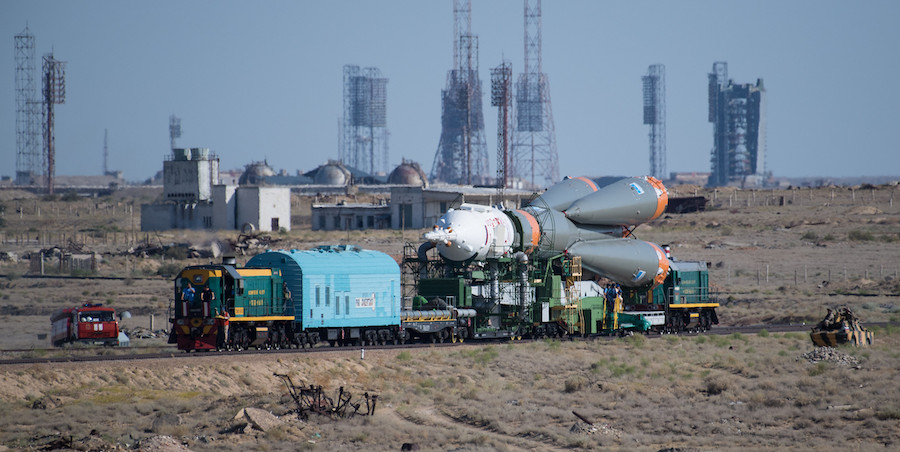
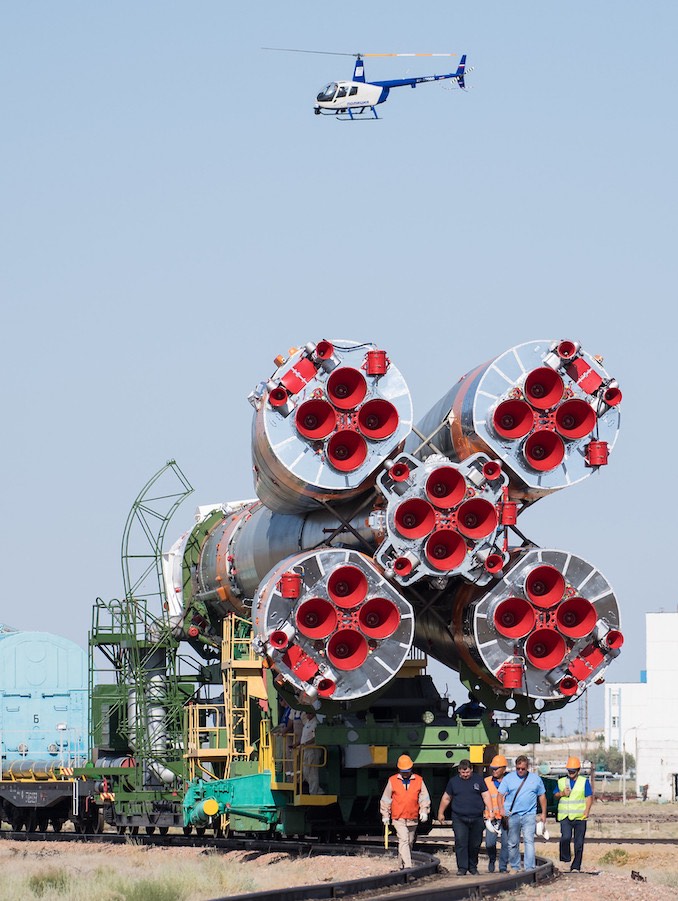
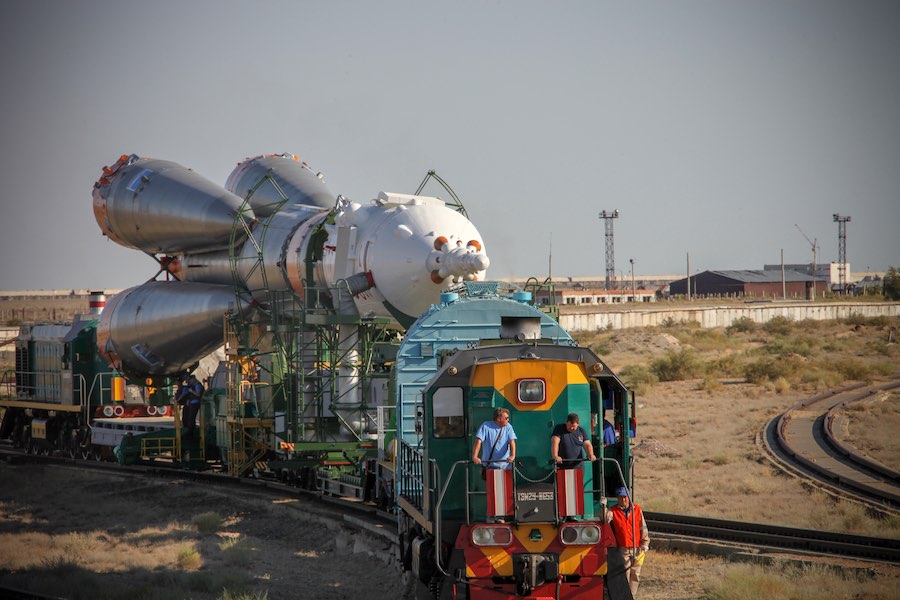
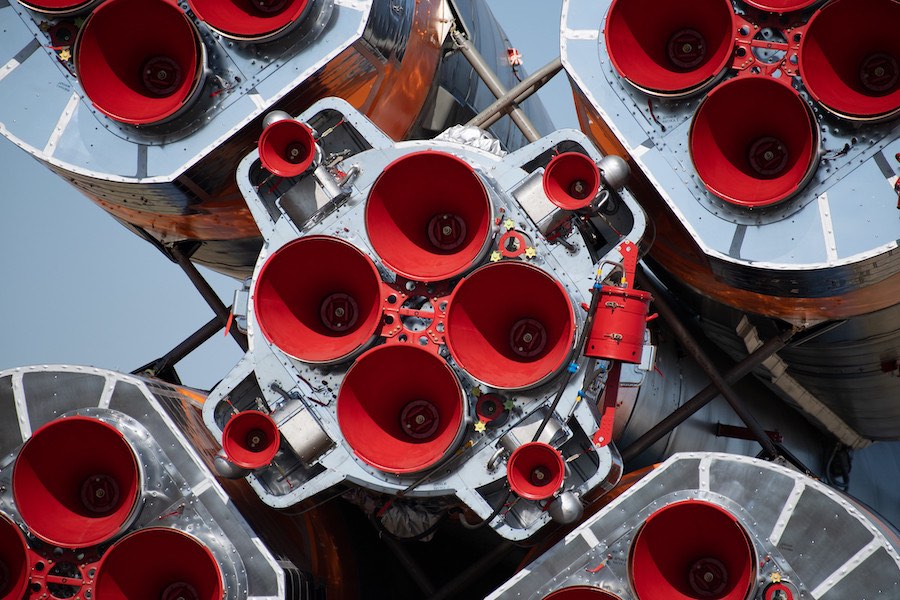
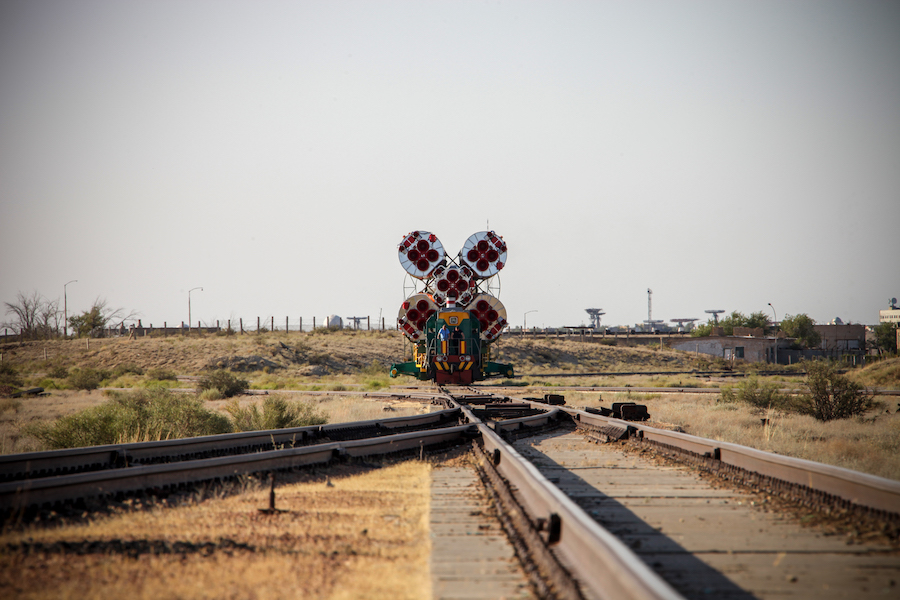
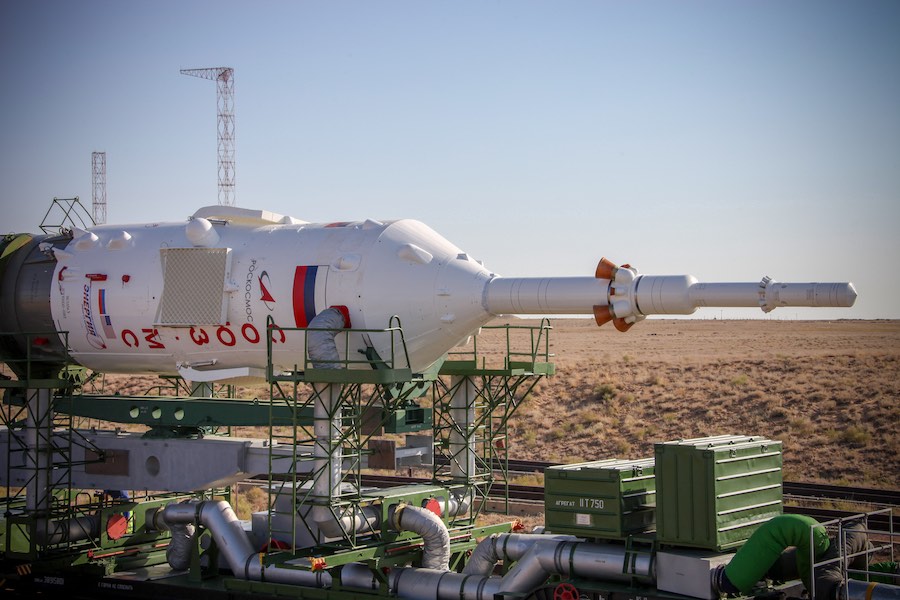
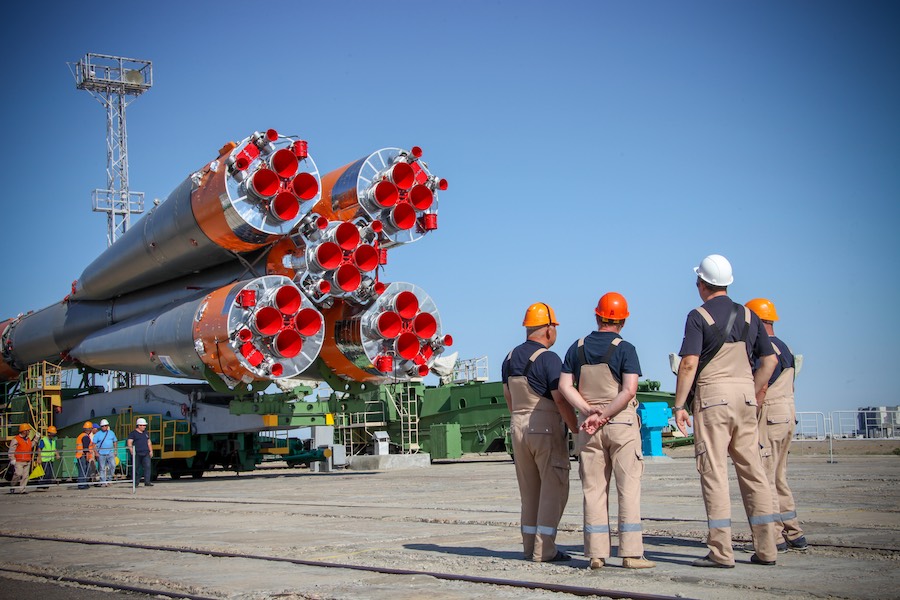
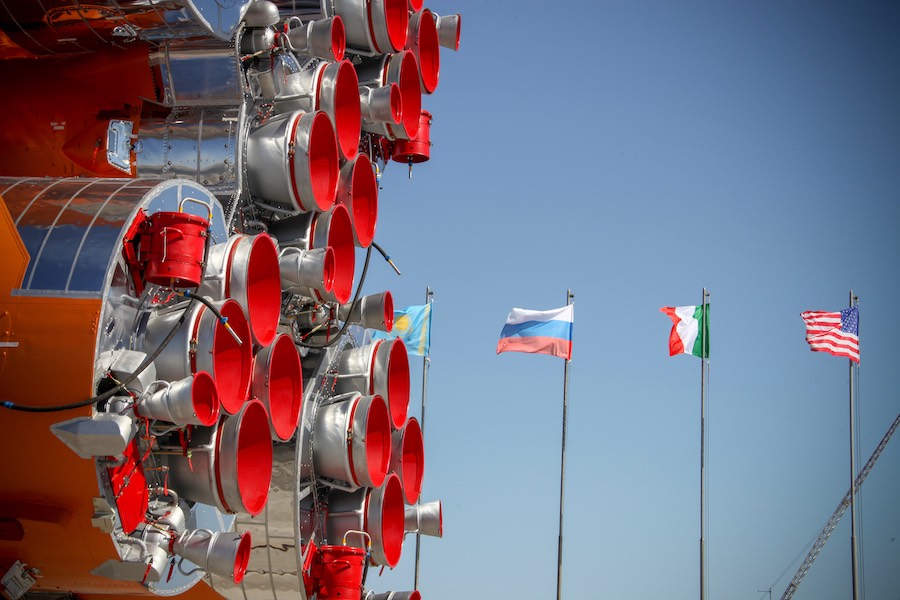
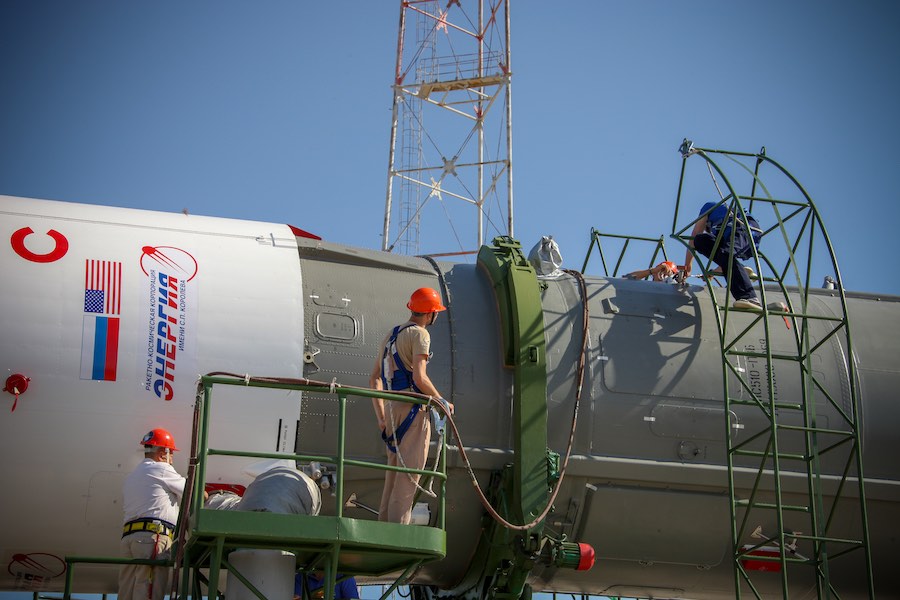
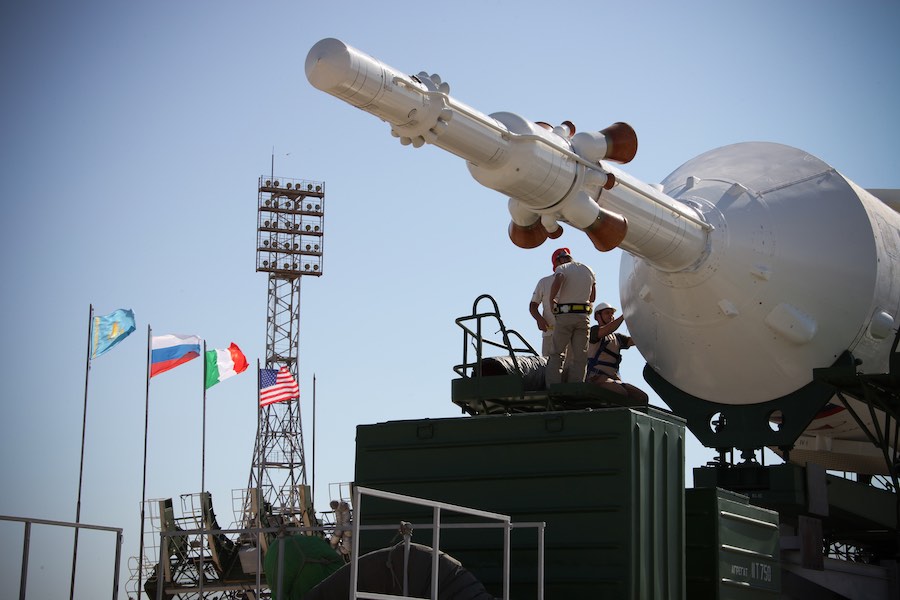
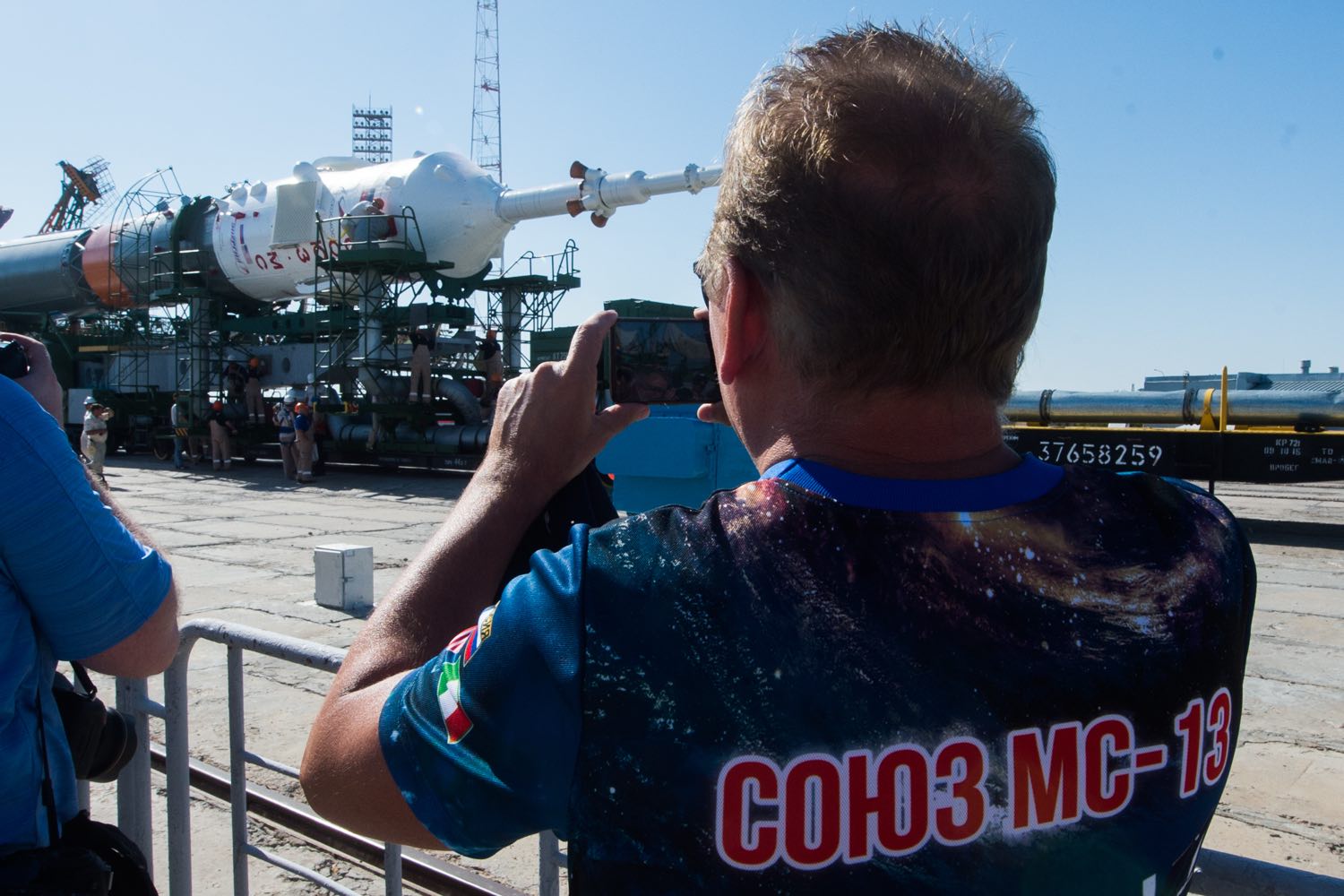
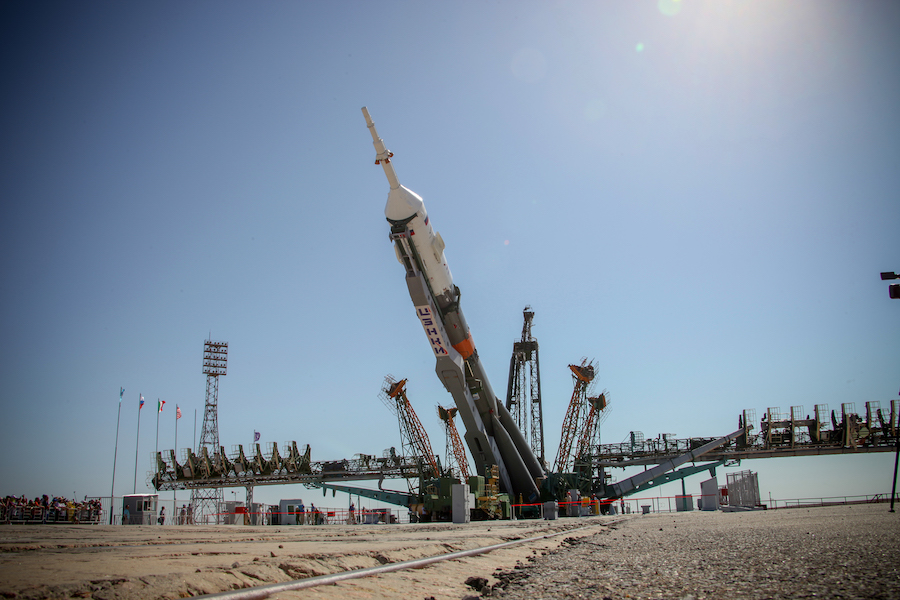
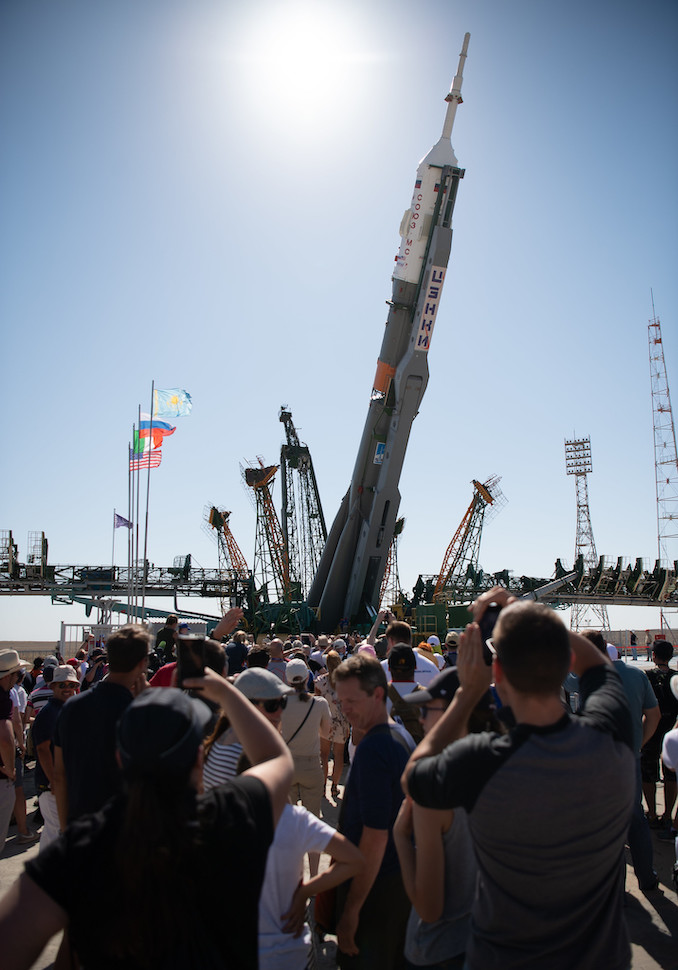
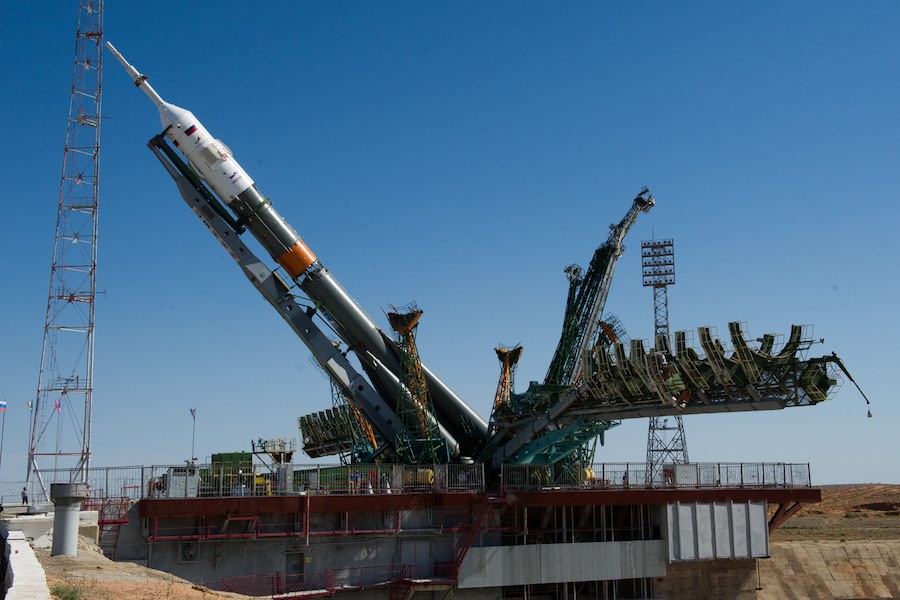
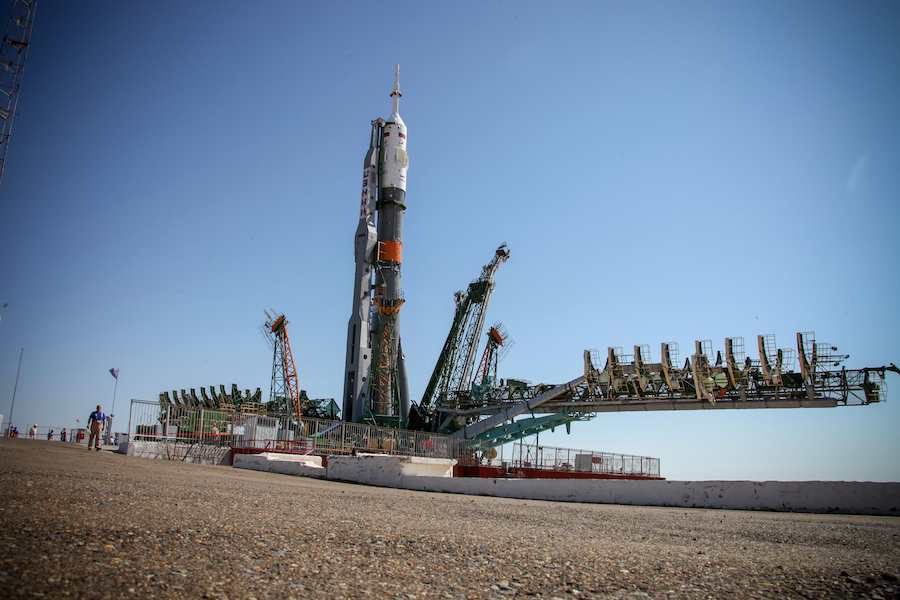
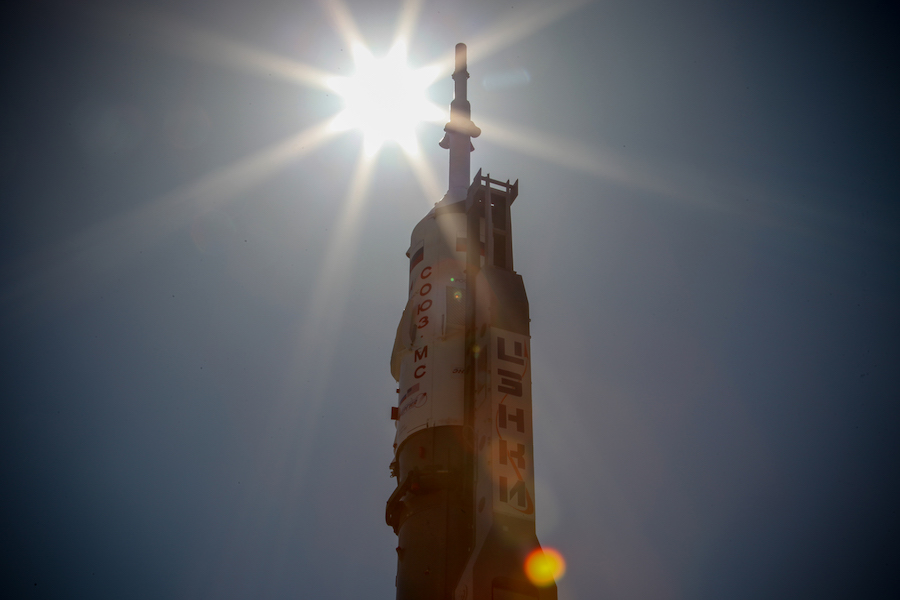
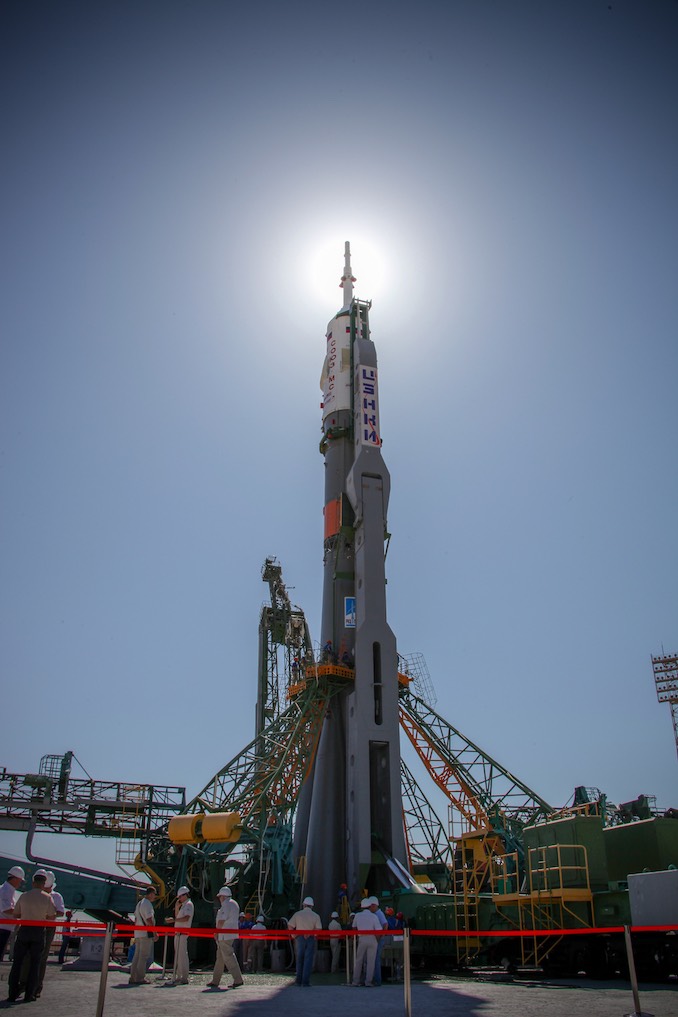
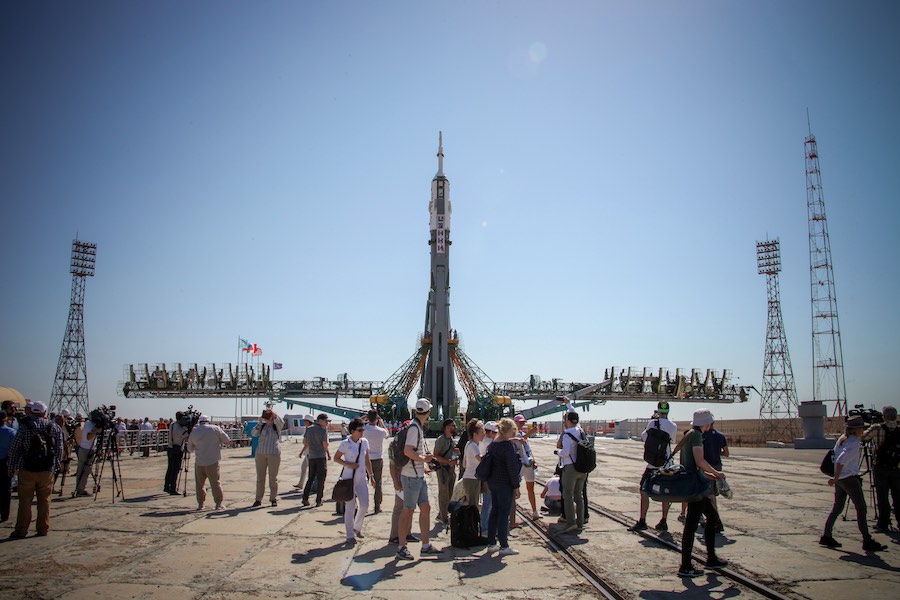
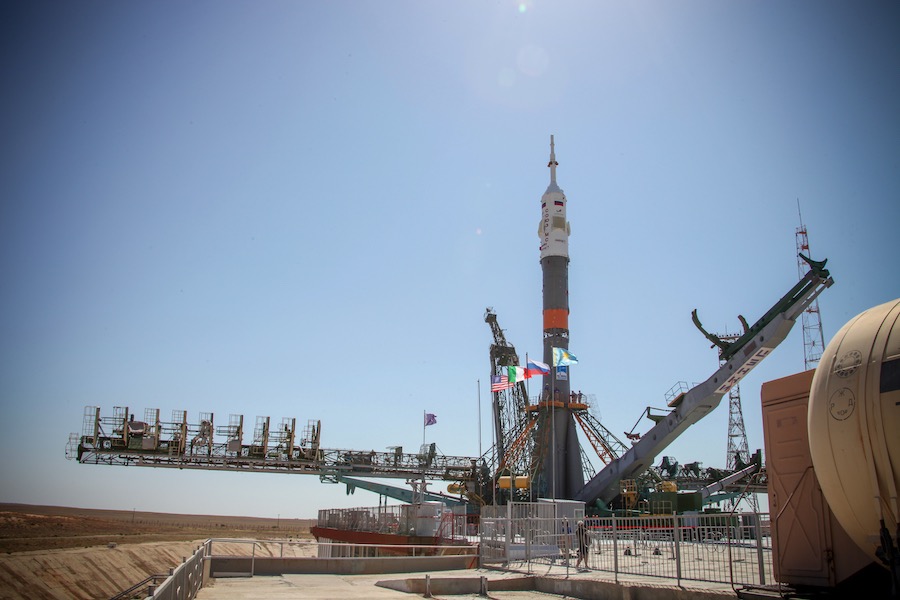
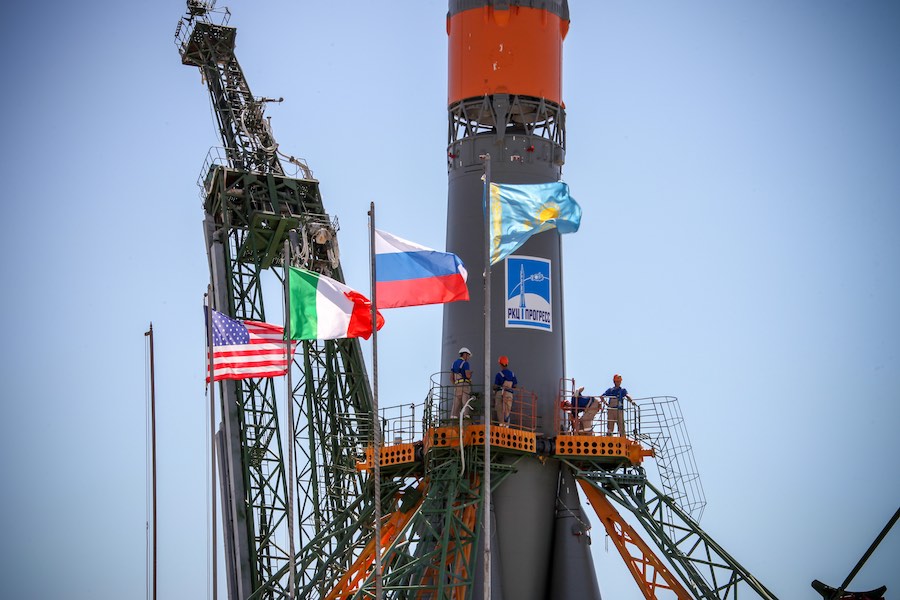
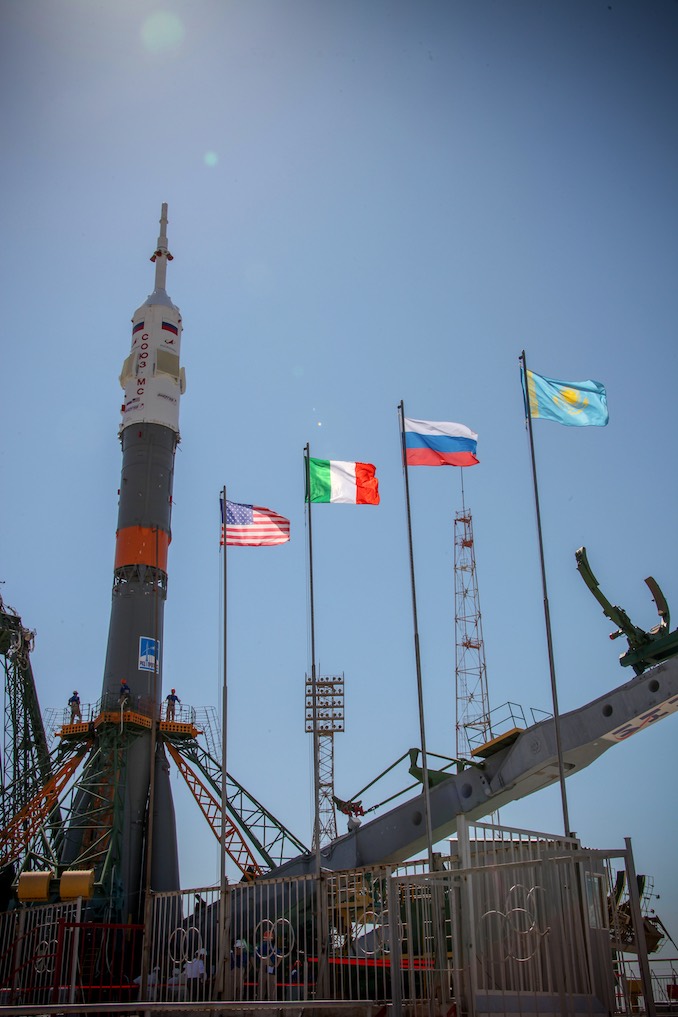
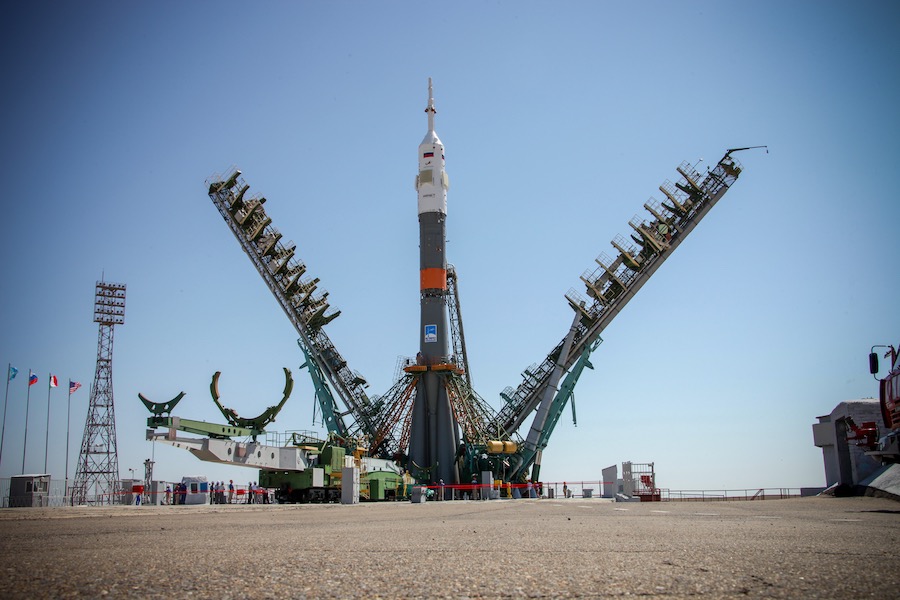
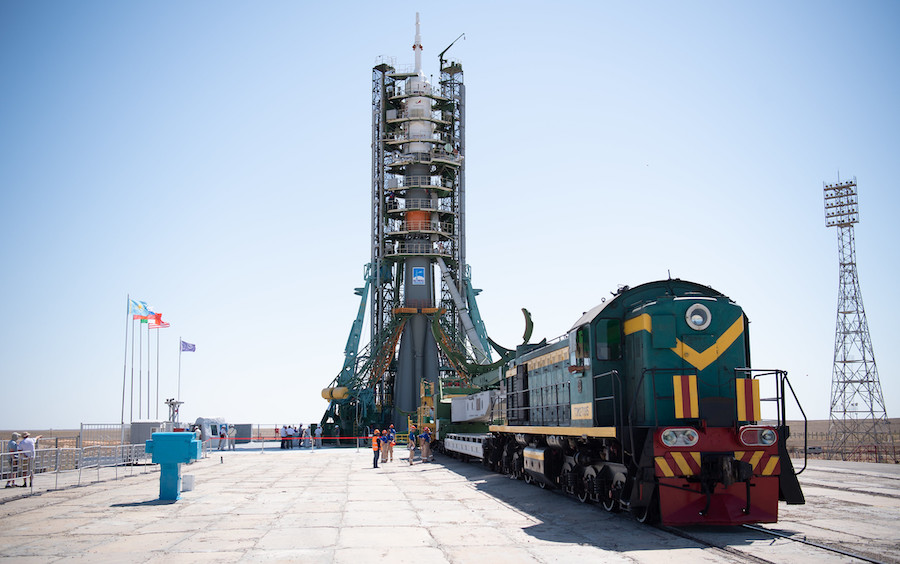
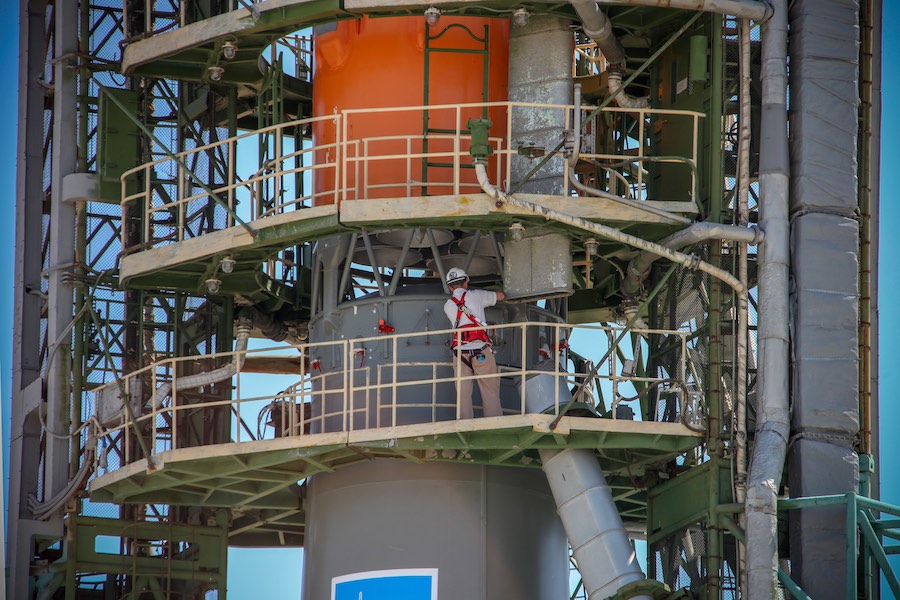
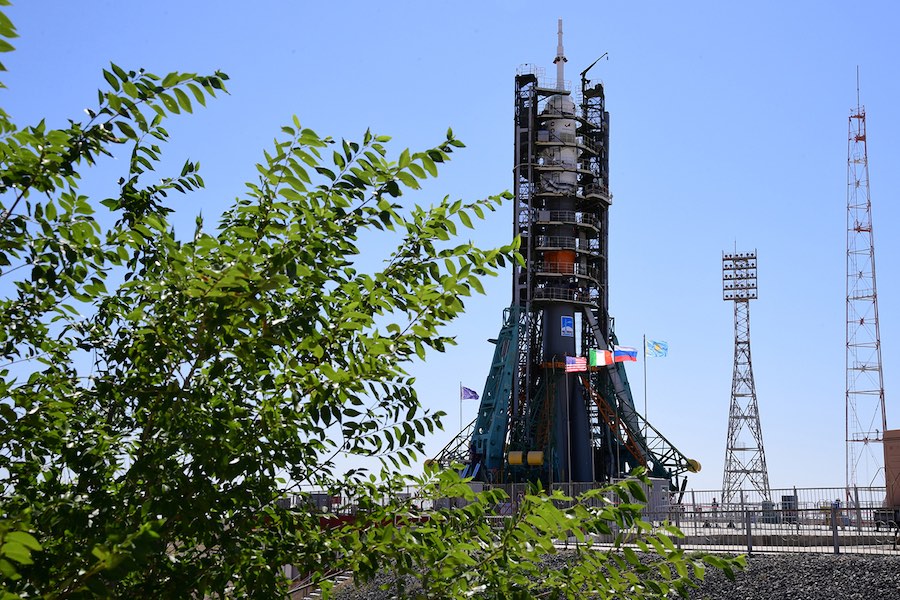
Email the author.
Follow Stephen Clark on Twitter: @StephenClark1.

